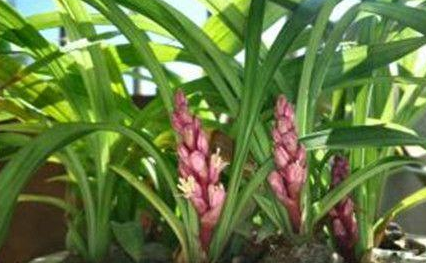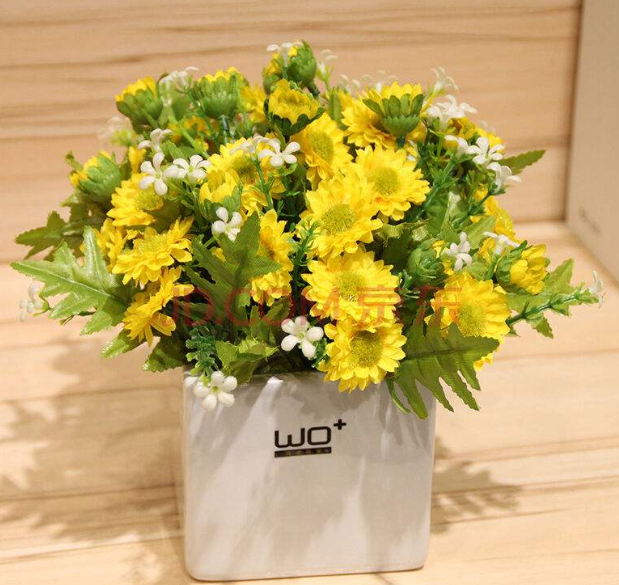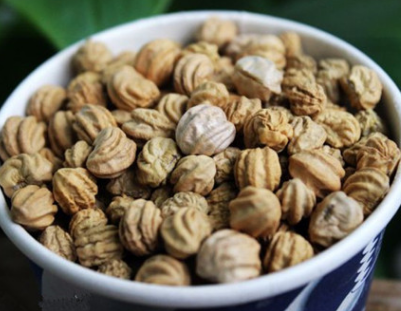What are the reasons for when orchids blossom or not?
Speaking of this orchid, this is a lot of people like farming, this orchid is so likeable, when will the orchid blossom? What are the reasons why orchids do not bloom:

When do orchids blossom:
The flowering time of different orchids is also different. Spring orchids from January to March, ink orchids from December to February, Jianlan from May to October, Huilan from March to May, and cold orchids from November to January. The time of flowering is also different, for example, spring Dendrobium blossoms in spring, autumn Dendrobium blossoms in autumn, and Phalaenopsis should bloom in summer, but it can also bloom during the Spring Festival through greenhouse control.
The reason why orchids do not blossom:
1. Under the age of growth:
Seedlings (seed seedlings) and tissue culture seedlings do not necessarily blossom even if they have been cultivated for many years, just like other plants, such as fruit trees must reach a certain age before they can blossom and bear seeds, and orchids cannot blossom and bear seeds until a certain age.
2. The variety difference is different.
The species differences among orchids are different, and it is also a common phenomenon that orchids are difficult to blossom due to different climatic conditions. Chunlan, for example, is more difficult to blossom in some areas, or can blossom less.
3. Physiological growth disorder:
The physiological growth of orchids is disrupted due to various reasons, and new leaf buds burst during the formation of flower buds. In this case, orchid plants do not have more nutrients to maintain the normal differentiation of flower buds, resulting in flower buds that stop growing and cannot blossom.
4. Improper cultivation methods:
Improper cultivation methods may also lead to the failure of orchids to blossom, there are mainly the following two situations.
① soil fertilizer: orchid plant material contains too much nitrogen fertilizer and less phosphorus and potassium fertilizer, which leads to excess vegetative growth and inhibition of reproductive growth. The solution is to replace nitrogen, phosphorus and potassium balanced plant material or increase the application of phosphorus and potassium fertilizer.
This is the time when orchids bloom and the reasons why they do not bloom. It is not easy to raise orchids well.
Too much watering of ②: too much watering during flower bud differentiation and wet plant materials will also lead to exuberant vegetative growth and inhibit reproductive growth. Because the plant material is too wet, the nutrients contained in the plant material will often be absorbed and transmitted by the root to participate in the metabolism of the plant along with the water. As soon as the metabolism is strong, the respiration will be exuberant, thus counteracting the products of leaf photosynthesis. The organic matter accumulation of orchid plants is affected, and flower bud differentiation is lack of due power.
What is the reason why the Cateran flower does not bloom when it blossoms?
Timely pruning is necessary if the Cateran flowers are to grow better. When does the Katran flower blossom? What is the reason for not blooming:
When does the Cateran flower bloom:
Cartland usually blossoms in spring and autumn, blossoms once or twice a year, and the flowering period is usually 3-4 weeks.
The horticultural hybrid of Cartland is one of the most famous orchids in the world. The pseudobulb is clavate or cylindrical, with 1 ~ 3 leaves at the top; the leaves are thick and hard, the midvein is concave; the flowers are single or several, born at the top of the pseudobulb, and the flowers are large and beautiful, bright and rich in color.
Native to tropical America, it is the national flower of Brazil, Argentina, Colombia and other countries. There are more than thousands of varieties. The colors are white, yellow, green, red and purple and so on. Propagation should be done by plant division, tissue culture or aseptic sowing. Sex likes warmth, moisture and plenty of light.
Potted plants such as fern roots, moss and bark are usually used. High air humidity, proper fertilization and ventilation are needed during the growth period.
What is the reason why Cartland flowers do not bloom:
In general, it takes 4 ∼ 6 years for Cartland to mature and blossom. If in the growth process, the orchid plant growth is not mature and frequently split, in order to reach the number of production, because the orchid plant does not have enough time to grow and mature, it is impossible or rarely blossom.
Therefore, in the process of cultivation, this work is not carried out unless the plant grows all over the basin, or the substrate such as water moss has rotted, and the plant has to be changed. As mentioned above, frequent ramets can affect flowering.
Light is the most important factor affecting the health and flowering of Cartland plants, and the flowering rate will be delayed or the flowering rate will be low if lack of sunlight. The key to the maintenance of Cartland after flowering is that Cartland needs more light, except at noon, where the sun shines directly on the plant, on the eastern and shaded south windowsill, or on the western windowsill.
If it is cultivated in a greenhouse, it should be shaded to 50% or 70% of the full light. If the light is sufficient, the leaves should be medium green and the false bulbs should be erect, but some varieties do not need too much daylight, such as dark scarlet flowers and mini flowers that bloom in winter.
The Cateran flowers are really beautiful and live up to their fame.
When do orchids blossom? why don't orchids blossom?
Orchid is one of the four gentlemen in flowers. Chinese people have always regarded it as a symbol of nobility and elegance. Let's take a look at when orchids blossom and why orchids don't blossom.
When does the orchid blossom
The flowering time of different orchids varies, from January to March, from December to February, from May to October, from March to May, and from November to January. There are also different varieties of orchids, and the time of flowering is also different. for example, spring Dendrobium blossoms in spring, autumn Dendrobium blossoms in autumn, and Phalaenopsis blossoms normally in summer, but it can also bloom in Spring Festival through greenhouse air control.
Why don't orchids bloom?
1. Under the age of growth: seedlings (seed seedlings) and tissue culture seedlings do not necessarily blossom even if they have been cultivated for many years, just like other plants, such as fruit trees can not blossom and bear fruit until a certain age, orchids can not blossom and bear seeds until a certain age.
2. Varieties are different: species differences among orchids are different, and it is also a common phenomenon that orchids are difficult to blossom due to different climatic conditions. Chunlan, for example, is more difficult to blossom in some areas, or can blossom less.
3. Physiological growth disorder: the physiological growth of orchids is disrupted due to various reasons, and new leaf buds burst during the formation of flower buds. In this case, the orchid plants do not have more nutrients to maintain the normal differentiation of flower buds. As a result, the flower buds stop growing and cannot bloom.
4. Improper cultivation methods: improper cultivation methods may also lead to the failure of orchids to bloom. There are mainly the following two situations.
① soil fertilizer: orchid plant material contains too much nitrogen fertilizer and less phosphorus and potassium fertilizer, which leads to excess vegetative growth and inhibition of reproductive growth. The solution is to replace nitrogen, phosphorus and potassium balanced plant material or increase the application of phosphorus and potassium fertilizer.
② watering too much: too much watering during flower bud differentiation, plant materials are too wet, which will also lead to exuberant vegetative growth, inhibit reproductive growth, flower bud differentiation lack of due power, resulting in orchids do not bloom, reasonable watering.
What are the varieties of orchids
1. Chunlan: Chunlan is widely distributed and rich in resources. the flowering period is 2 ~ 3 months and lasts about 1 month. the fragrance of flowers is rich and pure, and precious varieties have petal types such as lotus, plum, daffodils, butterflies and so on. Jiangsu and Zhejiang famous products are the most typical in terms of petal type.
2. Cymbidium: the root of Cymbidium is thick and long, the leaf is narrowly band-shaped, the quality is rough, hard, pale green, the leaf margin is serrated obviously, the midrib is obvious. The fragrance of the flowers is long-lasting, with yellow, white, green, light red and complex colors, mostly colored flowers, as well as plain flowers and butterfly flowers.
3. Jianlan: Jianlan includes summer flowering Xialan, Qiulan, etc., strong and straight, leafy green flowers, fragrant flowers, not afraid of summer, cold, strong vitality, easy to cultivate, different varieties have different flowering periods, and flowers can be seen from May to December.
4. Cold orchid: cold orchid leaves are slender, especially the leaf base is thinner, the leaf posture is elegant and unrestrained, green and beautiful, there are large, medium, fine leaves and edges and other varieties, flowers are yellow, green, purple, dark purple, etc., generally have mixed veins and spots, but also clean and flawless plain flowers.
5. Cymbidium: Cymbidium originated in Guangdong, Guangxi, Fujian, Yunnan, Taiwan, Hainan and so on. Orchid farmers in southern China, especially in Guangdong and Yunnan, prefer to cultivate and watch, from October to March of the following year.
6. Spring Jian: spring Jian was first used as a variety of Cymbidium, and later it was designated as an independent species with red, yellow, white, green, purple, black and complex colors, gorgeous and dazzling, slim appearance, elegant charm, fragrant and pure flavor. It is often the first choice for orchid farmers.
- Prev

How to cultivate daisies in pots? how to water daisies every few days?
Daisy, also known as longevity chrysanthemum and spring chrysanthemum, originated in Europe, is a perennial early spring herbaceous flower of Compositae and daisy genera, often cultivated for 2 years. It can not only plant flower beds, but also plant in pots to beautify the courtyard balcony. Daisy leaves spatulate to Obovate, rosette-shaped base, dense dwarf, green and fresh
- Next

What is the language of Trollius paniculata in sowing time
Handelia lanceolata originated in South America, like warm, humid, avoid high temperature and extreme heat in summer, can not bear waterlogging, and is easy to cultivate. It can be cultivated perennially in the south of China, while in North China, it is sown in autumn and cultivated indoors in pots, as spring flowers to make them bloom during New Year's Day and Spring Festival. Let's take a look at how to sow the lotus.
Related
- Fuxing push coffee new agricultural production and marketing class: lack of small-scale processing plants
- Jujube rice field leisure farm deep ploughing Yilan for five years to create a space for organic food and play
- Nongyu Farm-A trial of organic papaya for brave women with advanced technology
- Four points for attention in the prevention and control of diseases and insect pests of edible fungi
- How to add nutrient solution to Edible Fungi
- Is there any good way to control edible fungus mites?
- Open Inoculation Technology of Edible Fungi
- Is there any clever way to use fertilizer for edible fungus in winter?
- What agents are used to kill the pathogens of edible fungi in the mushroom shed?
- Rapid drying of Edible Fungi

